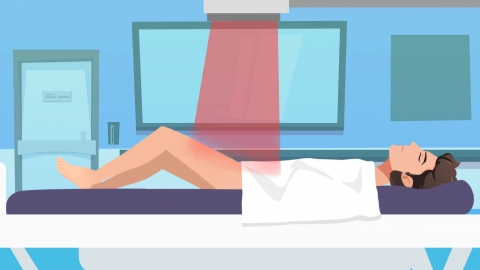How to perform the supine leg-raising test
The abdominal lift test is a diagnostic method used to assist in evaluating lumbar spine conditions such as lumbar disc herniation. The procedure involves steps including preparation and positioning, abdominal lifting, posture maintenance, observation of responses, and adjustment with repetition. It should be performed under professional guidance to ensure accurate results. If severe lower back pain or leg numbness occurs during the test, medical consultation is recommended.
1. Preparation and Positioning: The subject lies supine (on their back) with legs naturally extended and arms placed at the sides of the body. The head should remain relaxed, and the back must be flat against the examination surface. Ensure the body is comfortable and stable to properly prepare for the abdominal lift, avoiding inaccurate results due to improper positioning.

2. Abdominal Lifting: Slowly raise the abdomen so that the lower back lifts off the bed surface, while keeping the legs straight and arms stationary. Lift the abdomen upward as much as possible to achieve the "abdominal lift" position. The movement should be slow and smooth to prevent sudden strain and discomfort in the lower back.
3. Posture Maintenance: Hold the lifted position for 3–5 seconds, paying attention to any abnormal sensations such as pain, numbness, or soreness in the lower back or limbs. Maintain steady, even breathing throughout—do not hold your breath—to clearly perceive bodily responses.
4. Observation of Responses: Carefully observe and record physical reactions during the lift and while holding the position. If lower back pain worsens, or if radiating pain or numbness develops in the legs, the test may be positive, indicating the need for further evaluation.
5. Adjustment and Repetition: If the initial attempt is improperly performed or yields unclear responses, reposition and repeat the test 1–2 times. Ensure consistent technique across all attempts to minimize inaccuracies due to procedural errors, and continue monitoring bodily reactions with each repetition.
In daily life, avoid prolonged bending or sitting. When experiencing back discomfort, apply heat therapy as needed for relief. Choose a mattress with appropriate firmness, and perform regular lumbar stretching and strengthening exercises to enhance back muscle strength and maintain spinal health.




